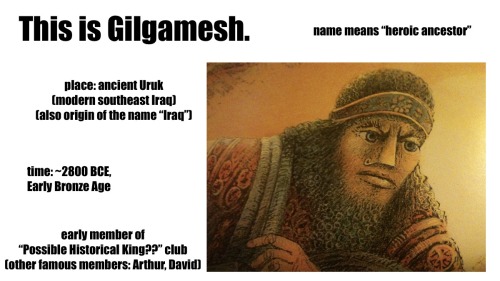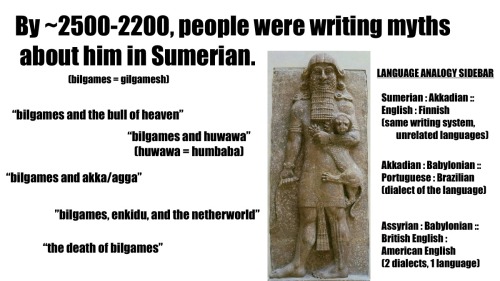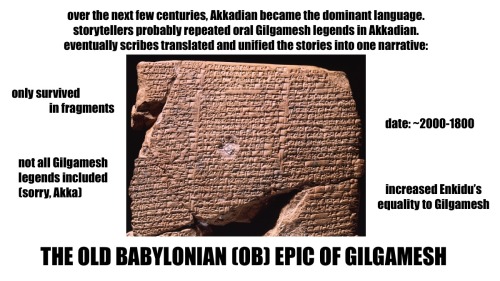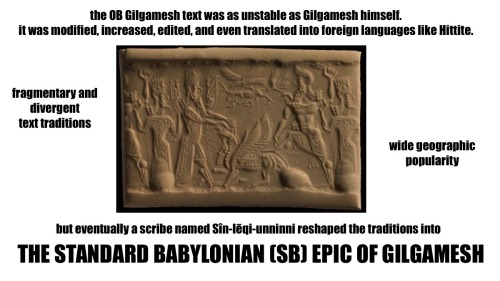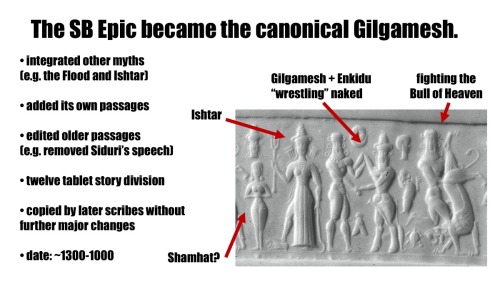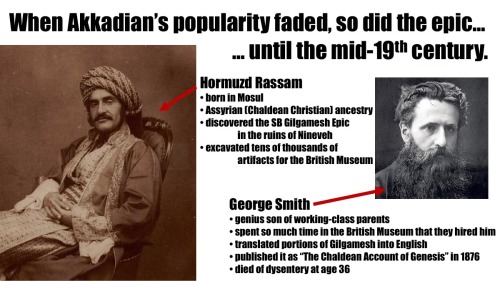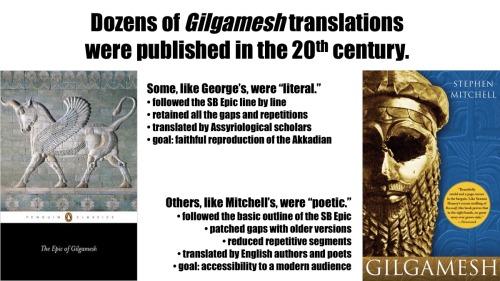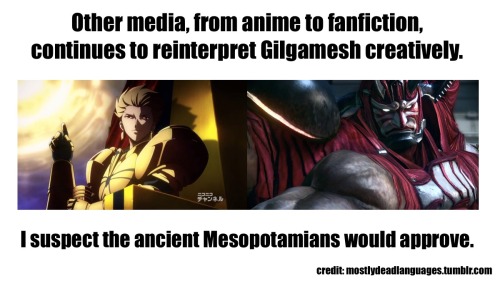Sasando
Sasando
pic: wikipedia

The sasando is a harp-like musical instrument from East Nusa Tenggara, Indonesia, specifically in the island of Rote. The name is derived from the Rote dialect word “sasandu” meaning “vibrating or sounded instrument.” It can have 28 or 56 strings.
There’s a folktale that explained the origins of the sasando. Once, there was a boy called Sangguana who lived in Rote. One day, he was tired and fell asleep under a palmyra tree, and dreamt that he played beautiful music with a unique instrument that made an enchanting sound. When he woke up, Sangguana was able to vividly remember the melody he played in the dream. He wanted to hear it once more, so he slept again, and dreamt of the same song and the same instrument. Sangguana had to wake up, eventually, but, not wanting to lose the instrument from his dream, he made an instrument out of palmyra leaves based on the one he saw in his dream, which became the basis for the sasando.
if you want to see how it sounds: (start 0:30)
More Posts from Philosophical-amoeba and Others

Harvard has a pigment library that stores old pigment sources, like the ground shells of now-extinct insects, poisonous metals, and wrappings from Egyptian mummies, to preserve the origins of the world’s rarest colors.

A few centuries ago, finding a specific color might have meant trekking across the globe to a mineral deposit in the middle of Afghanistan. “Every pigment has its own story,” Narayan Khandekar, the caretaker of the pigment collection, told Fastcodesign. He also shared the stories of some of the most interesting pigments in the collection.

Mummy Brown
“People would harvest mummies from Egypt and then extract the brown resin material that was on the wrappings around the bodies and turn that into a pigment. It’s a very bizarre kind of pigment, I’ve got to say, but it was very popular in the 18th and 19th centuries.”

Cadmium Yellow
“Cadmium yellow was introduced in the mid 19th century. It’s a bright yellow that many impressionists used. Cadmium is a heavy metal, very toxic. In the early 20th century, cadmium red was introduced. You find these pigments used in industrial processes. Up until the 1970s, Lego bricks had cadmium pigment in them.”
Annatto “The lipstick plant—a small tree, Bixa orellana, native to Central and South America—produces annatto, a natural orange dye. Seeds from the plant are contained in a pod surrounded with a bright red pulp. Currently, annatto is used to color butter, cheese, and cosmetics.”

Lapis Lazuli “People would mine it in Afghanistan, ship it across Europe, and it was more expensive than gold so it would have its own budget line on a commission.”
Dragon’s Blood “It has a great name, but it’s not from dragons. [The bright red pigment] is from the rattan palm.”

Cochineal “This red dye comes from squashed beetles, and it’s used in cosmetics and food.”
Emerald Green “This is made from copper acetoarsenite. We had a Van Gogh with a bright green background that was identified as emerald green. Pigments used for artists’ purposes can find their way into use in other areas as well. Emerald green was used as an insecticide, and you often see it on older wood that would be put into the ground, like railroad ties.”

Source



Ernst Mach, Chuck Yeager, and supersonic flight
Today is the 70th anniversary of the first supersonic flight. On 14 October 1947, Air Force Captain Charles Yeager piloted the experimental Bell X-1 plane named Glamorous Glennis and “broke the sound barrier,” reaching what scientists call “Mach 1.”
Yeager’s historic flight came thirty-one years after the death of Ernst Mach, the Austrian physicist and philosopher whose research on sound particles remained obscure until aviation capabilities began to approach the speed of sound. Mach lends his name to Mach numbers, used to describe faster-than-sound travel, and Mach angles, which measure the angle of the shock waves caused by flight. In addition to his work with sound, Mach’s rejection of Newton’s ideas on space and time influenced Albert Einstein’s theory of relativity.
Image credits: 1) Chuck Yeager next to experimental aircraft Bell X-1 Glamorous Glennis, 1940s. US Air Force, Public Domain via Wikimedia Commons. 2) Ernest Mach from the Journal of Physical Chemistry, Volume 40, 1902. H. F. Jütte. Uploaded by Armin Kübelbeck, Public Domain via Wikimedia Commons. 3) Chuck Yeager at Nellis Air Force Base on the 65th anniversary of his flight, 14 October 2012. Master Sgt. Jason Edwards, US Air Force, Public Domain via Wikimedia Commons.



Since 2009, Ada Lovelace Day has aimed “to raise the profile of women in science, technology, engineering and maths by encouraging people around the world to talk about the women whose work they admire.” The day’s namesake, Ada Lovelace (1815-1852), was the daughter of Lord Byron and Anne Isabella Milbanke. Ada, in possession of a keen intellect and deep passion for machinery, was educated in mathematics at the insistence of her mother. Later in life, Ada studied the workings of the Analytical Engine developed by mathematician and inventor Charles Babbage. In her notes on the engine, Ada described an algorithm for computing numbers – an algorithm which would distinguish Ada as one of the world’s “first computer programmers.”
In honor of Ada Lovelace Day, we present some images from the CHF Archives of women working in various chemistry labs. Click on each photo for additional information.
And for more women in science content, consider taking a look at the films in The Catalyst Series: Women in Chemistry by the Chemical Heritage Foundation.
Word of the Day: potlatch
n. An opulent ceremonial feast (among certain North American Indian peoples of the north-west coast) at which possessions are given away or destroyed to display wealth or enhance prestige

Image: “Klallam people at Port Townsend” by James Gilchrist Swan. Public Domain via Wikimedia Commons
Categorizing Posts on Tumblr
Millions of posts are published on Tumblr everyday. Understanding the topical structure of this massive collection of data is a fundamental step to connect users with the content they love, as well as to answer important philosophical questions, such as “cats vs. dogs: who rules on social networks?”
As first step in this direction, we recently developed a post-categorization workflow that aims at associating posts with broad-interest categories, where the list of categories is defined by Tumblr’s on-boarding topics.
Methodology
Posts are heterogeneous in form (video, images, audio, text) and consists of semi-structured data (e.g. a textual post has a title and a body, but the actual textual content is un-structured). Luckily enough, our users do a great job at summarizing the content of their posts with tags. As the distribution below shows, more than 50% of the posts are published with at least one tag.

However, tags define micro-interest segments that are too fine-grained for our goal. Hence, we editorially aggregate tags into semantically coherent topics: our on-boarding categories.
We also compute a score that represents the strength of the affiliation (tag, topic), which is based on approximate string matching and semantic relationships.
Given this input, we can compute a score for each pair (post,topic) as:

where
w(f,t) is the score (tag,topic), or zero if the pair (f,t) does not belong in the dictionary W.
tag-features(p) contains features extracted from the tags associated to the post: raw tag, “normalized” tag, n-grams.
q(f,p) is a weight [0,1] that takes into account the source of the feature (f) in the post (p).
The drawback of this approach is that relies heavily on the dictionary W, which is far from being complete.
To address this issue we exploit another source of data: RelatedTags, an index that provides a list of similar tags by exploiting co-occurence patterns. For each pair (tag,topic) in W, we propagate the affiliation with the topic to its top related tags, smoothing the affiliation score w to reflect the fact these entries (tag,topic) could be noisy.

This computation is followed by filtering phase to remove entries (post,topic) with a low confidence score. Finally, the category with the highest score is associated to the post.

Evaluation
This unsupervised approach to post categorization runs daily on posts created the day before. The next step is to assess the alignment between the predicted category and the most appropriate one.

The results of an editorial evaluation show that the our framework is able to identify in most cases a relevant category, but it also highlights some limitations, such as a limited robustness to polysemy.
We are currently looking into improving the overall performances by exploiting NLP techniques for word embedding and by integrating the extraction and analysis of visual features into the processing pipeline.
Some fun with data
What is the distribution of posts published on Tumblr? Which categories drive more engagements? To analyze these and other questions we analyze the categorized posts over a period of 30 days.
Almost 7% of categorized posts belong to Fashion, with Art as runner up.

The category that drives more engagements is Television, which accounts for over 8% of the reblogs on categorized posts.

However, normalizing by the number of posts published, the category with the highest average of engagements per post isGif Art, followed by Astrology.

Last but not least, here are the stats you all have been waiting for!! Cats are winning on Tumblr… for now…

Family names for Family trees in Japanese

(source: http://www.e-keizu.com/info/family.html )
The numbers below match the blue number above in the image.
[M]祖父(そふ sofu), [F]祖母(そぼ sobo)
[M]曾祖父(そうそふ sousofu), [F]曾祖母(そうそぼ sousobo)
[M]高祖父(こうそふ kousofu), [F]高祖母(こうそぼ kousobo)
For big brother/sister of 1, [M]大伯父(おおおじ oooji),[F]大伯母(おおおば oooba) For little brother/sister of 1, [M]大叔父(おおおじ oooji),[F] 大叔母(おおおば oooba)
For big brother/sister of 2, [M]曾祖伯父(そうそはくふ sousohakufu),[F] 曾祖伯母(そうそはくぼ sousohakubo) For little brother/sister of 2, [M]曾祖叔父(そうそしゅくふ sousosyukufu),[F] 曾祖叔母(そうそしゅくぼ sousosyukubo)
For big brother/sister of 3, [M]高祖伯父(こうそはくふ kousohakufu),[F] 高祖伯母(こうそはくぼ kousohakubo) For little brother/sister of 3, [M]高祖叔父(こうそしゅくふ kousosyukufu),[F] 高祖叔母(こうそしゅくぼ kousosyukubo)
For big brother/sister of your father/mother, [M]伯父(おじ oji),[F]伯母(おば oba) For little brother/sister of your father/mother, [M]叔父(おじ oji),[F]叔母(おば oba)
For elder than you, [M]いとこ( itoko )・従兄(じゅうけい juukei),[F]いとこ( itoko )・従姉(じゅうし juushi) For younger than you, [M]いとこ( itoko )・従弟(じゅうてい juutei),[F] いとこ( itoko )・従妹(じゅうまい juumai)
[M]いとこ違い( itokochigai )・従甥(じゅうせい juusei),[F]いとこ違い( itokochigai )・従姪(じゅうてつ juutetsu)
従姪孫(じゅうてっそん juutesson)
For elder than your father/mother, [M]いとこ違い( itokochigai )・従伯父(じゅうはくふ juuhakufu),[F]いとこ違い( itokochigai )・従伯母(じゅうはくぼ juuhakubo ) For younger than your father/mother, [M]いとこ違い( itokochigai )・従叔父(じゅうしゅくふ juushukufu),[F]いとこ違い( itokochigai )・従叔母(じゅうしゅくぼ juushukubo)
For elder than you, [M]またいとこ( mataitoko )・はとこ( hatoko )・再従兄(さいじゅうけい saijuukei),[F]またいとこ( mataitoko )・はとこ( hatoko )・再従姉(さいじゅうし saijuushi) For younger than you, [M]またいとこ( mataitoko )・はとこ( hatoko )・再従弟(さいじゅうてい saijuutei),[F]またいとこ( mataitoko )・はとこ( hatoko )・再従妹(さいじゅうまい saijuumai )
[M]甥(おい oi),[F]姪(めい mei )
[M]姪孫(てっそん tesson)・又甥(またおい mataoi),[F]姪孫(てっそん tesson)・又姪(まためい matamei)
[M/F]曾姪孫(そうてっそん soutesson)
[M/F]玄姪孫(げんてっそん gentesson)
[M/F]孫(まご mago)
[M/F]ひ孫( himago )・曾孫(そうそん souson)
[M/F]やしゃご( yashago )・玄孫(げんそん genson)
[M/F]来孫(らいそん raison)
[M/F]昆孫(こんそん konson)
[M/F]仍孫(じょうそん jouson)
[M/F]雲孫(うんそん unson)
For elder than 1, [M]従祖伯父(じゅうそはくふ juusohakufu )・従大伯父(いとこおおおじ itokooooji ),[F]従祖伯母( じゅうそはくぼ juusohakubo )・従大伯母(いとこおおおば itokooooba) For younger than 1, [M]従祖叔父(じゅうそおじ juusooji)・従大叔父(いとこおおおじ itokooooji),[F]従祖叔母(じゅうそおば juusooba)・従大叔母(いとこおおおば itokooooba)
[M/F]三いとこ(みいとこ miitoko)・その又いとこ(そのまたいとこ sonomataitoko)
Also
You: 自分(じぶん jibun) Mather:母(はは haha) / Father: 父(ちち tsitsi)
(source: http://www.e-keizu.com/info/family.html )
Although I am a Japanese, I can’t call them all correctly… Does your language have the names?
Oval Eggs
The word egg was a borrowing from Old Norse egg, replacing the native word ey (plural eyren) from Old English ǣġ, plural ǣġru. Like “children” and “kine” (obsolete plural of cow), the plural ending -en was added redundantly to the plural form in Middle English. As with most borrowings from Old Norse, this showed up first in northern dialects of English, and gradually moved southwards, so that for a while, ey and egg were used in different parts of England.
In 1490, when William Caxton printed the first English-language books, he wrote a prologue to his publication of Eneydos (Aeneid in contemporary English) in which he discussed the problems of choosing a dialect to publish in, due to the wide variety of English dialects that existed at the time. This word was a specific example he gave. He told a story about some merchants from London travelling down the Thames and stopping in a village in Kent
And one of theym… cam in to an hows and axed for mete and specyally he axyd after eggys, and the goode wyf answerde that she could speke no Frenshe. And the marchaunt was angry, for he also coude speke no Frenshe, but wolde have hadde egges; and she understode hym not. And thenne at laste a-nother sayd that he wolde have eyren. Then the good wyf sayd that she understod hym wel. Loo, what sholde a man in thyse dayes now wryte, egges, or eyren? Certaynly it is hard to playse every man, by-cause of dyversite and chaunge of langage.
The merchant in this story was only familiar with the word egg, while the woman only knew ey, and the confusion was only resolved by someone who knew both words. Indeed, the woman in the story was so confused by this unfamiliar word egg that she assumed it must be a French word! The word “meat” (or “mete” as Caxton spelled it) was a generic word for “food” at the time.
The word ey may also survive in the term Cockney, thought to derive from the Middle English cocken ey (”cock’s egg”), a term given to a small misshapen egg, and applied by rural people to townspeople
Both egg and ey derived from the same Proto-Germanic root, *ajją, which apparently had a variant *ajjaz in West Germanic. This Proto-Germanic form in turn derived from Proto-Indo-European *h2ōwyóm. In Latin, this root became ōvum, from which the adjective ōvalis meaning “egg-shaped”, was derived. Ōvum itself was borrowed into English in the biological sense of the larger gamete in animals, while ōvalis is the source of oval.
The PIE root is generally though to derive from the root *h2éwis, “bird”, which is the source of Latin avis “bird”, source of English terms such as aviation. This word may also be related to *h2ówis “sheep”, which survived in English as ewe. One theory is that they were both derived from a root meaning something like “to dress”, “to clothe”, with bird meaning “one who is clothed [in feathers]” and sheep meaning “one who clothes [by producing wool]”.
-
 pega-chan liked this · 7 years ago
pega-chan liked this · 7 years ago -
 mesolonelyyy-blog reblogged this · 7 years ago
mesolonelyyy-blog reblogged this · 7 years ago -
 mesolonelyyy-blog liked this · 7 years ago
mesolonelyyy-blog liked this · 7 years ago -
 philosophical-amoeba reblogged this · 9 years ago
philosophical-amoeba reblogged this · 9 years ago -
 narya-agnynusa reblogged this · 9 years ago
narya-agnynusa reblogged this · 9 years ago -
 meridithium liked this · 9 years ago
meridithium liked this · 9 years ago -
 ratrym-blog liked this · 9 years ago
ratrym-blog liked this · 9 years ago -
 keiyoshi liked this · 9 years ago
keiyoshi liked this · 9 years ago -
 forgetful-amoeba liked this · 9 years ago
forgetful-amoeba liked this · 9 years ago -
 rubbertapping reblogged this · 9 years ago
rubbertapping reblogged this · 9 years ago -
 collagecity liked this · 9 years ago
collagecity liked this · 9 years ago -
 hvman-natvre reblogged this · 9 years ago
hvman-natvre reblogged this · 9 years ago -
 hvman-natvre liked this · 9 years ago
hvman-natvre liked this · 9 years ago -
 useless-indonesiafacts reblogged this · 9 years ago
useless-indonesiafacts reblogged this · 9 years ago
A reblog of nerdy and quirky stuff that pique my interest.
291 posts
